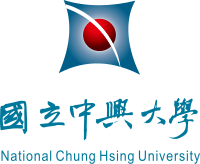The high-tech industry is important for economy development in the world, especially the metal surface treating, printed circuit board (PCB), photoelectricity and the semiconductor industries. The high-tech manufactures contain heavy metals and high concentrations phosphate. Therefore, the homogeneous nucleation of fluidized-bed method for treating wastewaters containing heavy metals is explored. Based on the results obtained before, we found that the reaction conditions for each metal ion are very different. It is impossible to use the optimum operation conditions of a metal ion for another. The effect of chelating agents and anions on the reaction is also different. In addition, there are always many metal ions presenting in the wastewater together. Therefore, finding the optimum operation conditions is very important for treating copper and tin with other metal ions (Ni, Pb, Zn, Fe). This is a three-years’ project. In the first year, a feasible reactor for homogeneous nucleation was designed. This research will focus on heavy metal removal by phosphate in the homogeneous nucleation. The effects of operation (pH, upflow velocity, surface loading, molar ratio, influent flow) and reaction (metal ions、chelating agents、anions) conditions will be investigated. In the second year, the project will use carbonate instead to carry out the experiments again. By the results from the study of the first and second years, suitable treated wastewaters by this crystallization/granulation process will be determined. In the third year, we will use the homogeneous nucleation of fluidized-bed method to treat the metal surface treating plants and printed circuit board real wastewater containing multiple heavy metal ions, and find the optimum operation parameters.
Project 2 This study is to develop and synthesize novel Cu-Fe, Ni-Fe and Co-Fe bimetallic catalysts that can be used at neutral pH, and to evaluate the effect of UV light on enhancing the catalytic efficiency. In this study, the catalysts will be synthesized by fluidized bed crystallization technology and the traditional impregnation method. This is a three- year project. In the first year, dimethylsulfoxide, which accounts for the highest proportion in the wastewater from the wastewater of thin film transistor liquid crystal display. The catalysts will be synthesized by fluidized bed and impregnation method. The catalytic performance of the metal catalysts will be compared by using heterogeneous Fenton, photo-Fenton and fluidized bed Fenton technologies in terms of degradation and mineralization. In the second year, ethanolamine, which is a very common pollutant in the wastewater of thin film transistor liquid crystal display will be used as the target pollutant, and the optimal metal-to-metal ratio, calcination temperature and calcination time in the synthesis catalyst will be used to study different important parameters (namely, initial pH, H2O2 dosage) , initial concentration, catalyst dosage, catalyst support, light intensity and active oxygen) to evaluate the degradation and mineralization efficiency of ethanolamine. In the third year, the optimum bimetallic catalyst will be selected based on the results of the previous two years. Additionally, a catalyst using goethite as the carrier will be synthetized and applied for treatment of the mixed synthetic wastewater of dimethyl sulfide and ethanolamine to compare their efficiencies. Real TFT-LCD wastewater will also be treated by the catalysts to verify the performance of the catalysts, so as to achieve the goal of effectively treating wastewater from the thin-film liquid crystal display process.
![]()
- Field: Engineering
- School: National Chung Hsing University
- Organizer: Department of Environmental Engineering
- Period of Apply: 2024/02/01 - 2024/05/31
- Term: 2024/04/01 and 2024/12/31
- Contact Person:Ming-Chun Lu
- Email:mmclu@nchu.edu.tw








